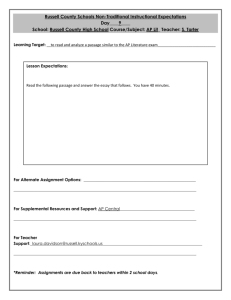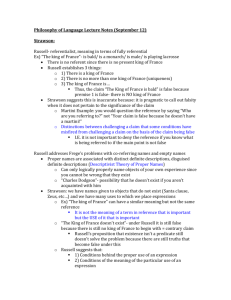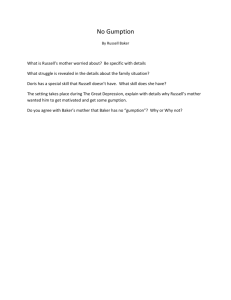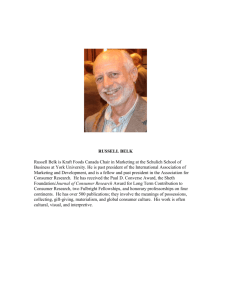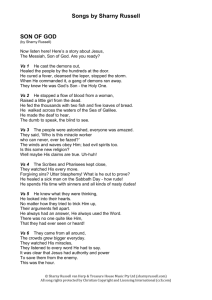24.01 Classics of Western Philosophy VI. Russell Lecture 2
advertisement
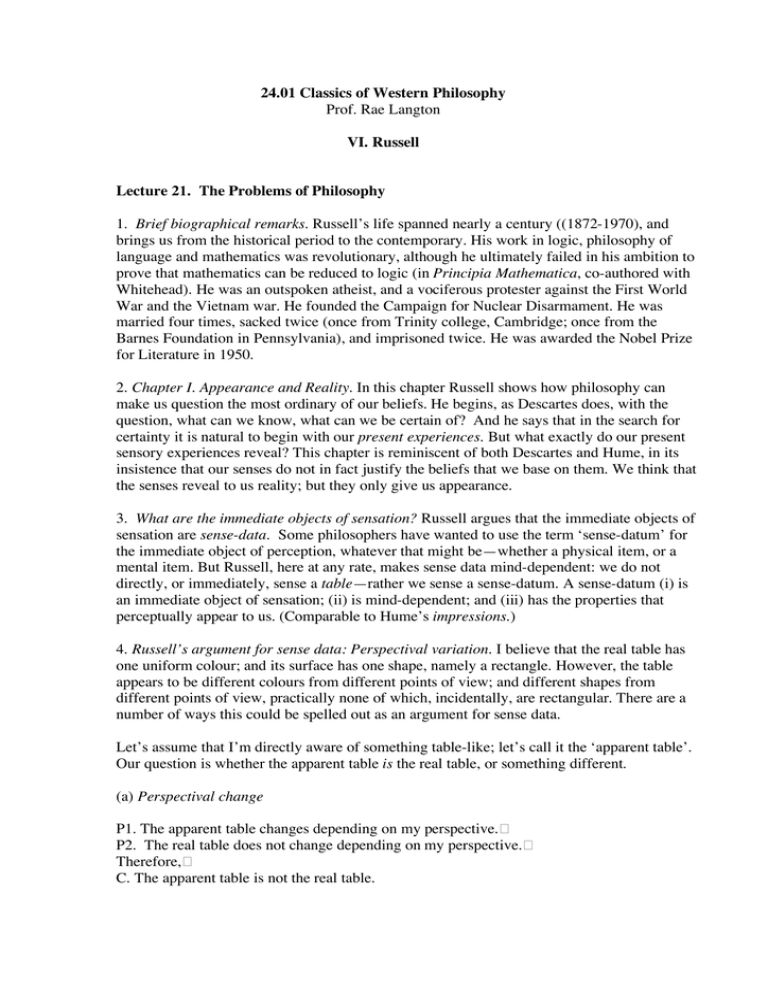
24.01 Classics of Western Philosophy Prof. Rae Langton VI. Russell Lecture 21. The Problems of Philosophy 1. Brief biographical remarks. Russell’s life spanned nearly a century ((1872-1970), and brings us from the historical period to the contemporary. His work in logic, philosophy of language and mathematics was revolutionary, although he ultimately failed in his ambition to prove that mathematics can be reduced to logic (in Principia Mathematica, co-authored with Whitehead). He was an outspoken atheist, and a vociferous protester against the First World War and the Vietnam war. He founded the Campaign for Nuclear Disarmament. He was married four times, sacked twice (once from Trinity college, Cambridge; once from the Barnes Foundation in Pennsylvania), and imprisoned twice. He was awarded the Nobel Prize for Literature in 1950. 2. Chapter I. Appearance and Reality. In this chapter Russell shows how philosophy can make us question the most ordinary of our beliefs. He begins, as Descartes does, with the question, what can we know, what can we be certain of? And he says that in the search for certainty it is natural to begin with our present experiences. But what exactly do our present sensory experiences reveal? This chapter is reminiscent of both Descartes and Hume, in its insistence that our senses do not in fact justify the beliefs that we base on them. We think that the senses reveal to us reality; but they only give us appearance. 3. What are the immediate objects of sensation? Russell argues that the immediate objects of sensation are sense-data. Some philosophers have wanted to use the term ‘sense-datum’ for the immediate object of perception, whatever that might be—whether a physical item, or a mental item. But Russell, here at any rate, makes sense data mind-dependent: we do not directly, or immediately, sense a table—rather we sense a sense-datum. A sense-datum (i) is an immediate object of sensation; (ii) is mind-dependent; and (iii) has the properties that perceptually appear to us. (Comparable to Hume’s impressions.) 4. Russell’s argument for sense data: Perspectival variation. I believe that the real table has one uniform colour; and its surface has one shape, namely a rectangle. However, the table appears to be different colours from different points of view; and different shapes from different points of view, practically none of which, incidentally, are rectangular. There are a number of ways this could be spelled out as an argument for sense data. Let’s assume that I’m directly aware of something table-like; let’s call it the ‘apparent table’. Our question is whether the apparent table is the real table, or something different. (a) Perspectival change P1. The apparent table changes depending on my perspective.� P2. The real table does not change depending on my perspective.� Therefore,� C. The apparent table is not the real table. (b) Perpectival multiplicity P1. The apparent table has many different shapes, depending on my perspective.� P2. The real table has only one shape.� Therefore,� C. The apparent table is not the real table. But the apparent table is something: something which has different shapes at different times, and something of which I’m directly aware—in short a sense datum. 5. The epistemological role of sense data. It is plain that if we are to know anything about the table, it must be by means of the sense data—brown colour, oblong shape, smoothness, etc— which we associate with the table. (1103) Russell says that if we know anything about the table, it can only be by means of the sense data: but the sense data are something other than the table. We face two questions: (1) Is there a real table at all? And (2) If so, what sort of object is it? Sense data provide our only possible source of answers to these questions: compare Hume’s claim that ideas must have their origin in impressions. 6. Matter. Russell takes matter to be ‘the collection of all physical objects’; so if we take the real table to be a physical object, the more general version of the above two questions will be, (1) Is there any such thing as matter? And (2) if so, what is its nature? (Russell notes two philosophers, Berkeley and Leibniz, who took sense data to be signs of something independent of our minds—but not a physical, material thing.) Matter is the topic of Chapter II. 7. Criticisms of the argument for sense data. J.L Austin argued against Russell: If… a church were cunningly camouflaged so that it looked like a barn, how could any serious question be raised about what we see when we look at it? We see, of course, a church that now looks like a barn. We do not see an immaterial barn, an immaterial church, or an immaterial anything else. And what in this case could seriously tempt us to say that we do? (Austin, Sense and Sensibilia) 8. What are sense data? They are supposed to have, e.g. sizes and shapes. So, where are they? Not where the table is—or how many entities would we have there?! Not where our brains are—nothing in my brain is trapezoid-shaped when I see the table from that sort of angle. 9. Alternatives to sense data. ‘Direct realism’ (e.g. Austin); the ‘adverbial theory’ (e.g. Roderick Chisholm) — I am appeared to table-ishly.
